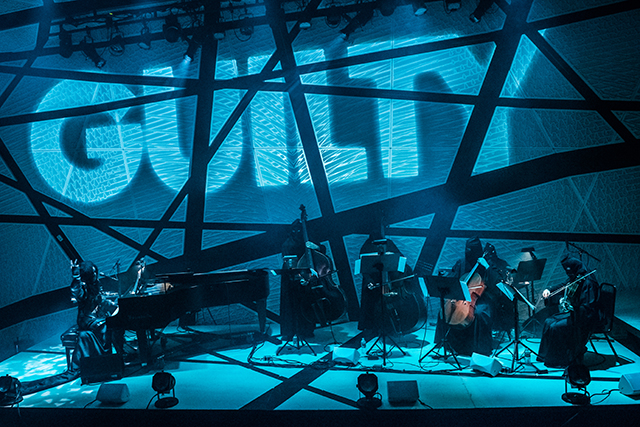Community, Leadership, Experimentation, Diversity, & Education
Pittsburgh Arts, Regional Theatre, New Work, Producing, Copyright, Labor Unions,
New Products, Coping Skills, J-O-Bs...
Theatre industry news, University & School of Drama Announcements, plus occasional course support for
Carnegie Mellon School of Drama Faculty, Staff, Students, and Alumni.
CMU School of Drama
Friday, January 20, 2017
A Gothic, Apocalyptic Opera Releases the Demons of Black Collective Consciousness
The Creators Project: There’s opera, there’s blues, and then there’s an opera done by a “negrogothic, devil-worshipping, free black man in the blues tradition.” This is the self-constructed description of performer M. Lamar’s contribution to Prototype Festival, a Brooklyn celebration of operatic performance that just finished its 2017 run this past Sunday. Dubbed Funeral Doom Spiritual, Lamar filled a two-floor performance room at National Sawdust with a black-veiled orchestra, a wooden coffin, and harrowing projected footage of breathless black bodies, while the artist himself played piano and sung a narrative of torment in his chilling soprano voice for 75 minutes.
Subscribe to:
Post Comments (Atom)

4 comments:
This production looks like something I love. I am not scared by the title “opera,” I am actually drawn to it. At least from the production photos, it seems like lighting and media have been used in conjunction extremely well. Standard operas — not surprisingly in my opinion — rely in spectacle — especially from their designs — for their production, but this production appears to be more about the shadows created and more of a design and more minimalistic than your standard opera. It also appears to be extremely relevant. While I am very against operas sung in English — whether they were intended to be or not — this opera excites me because it appears to be closer to a musical than an opera. I would be interested to see the importance to the breaks in the back wall and the floor. Also, I wonder whether the projection is mapped around the breaks or if it is just a straight projection which just goes over the black crevasses.
What an interesting interpretation of mourning. Funeral Doom Spiritual seems like the most unlikely intersection of opera, anti-religion, blues music, and anti-racism. I know it seems kind of crazy, but I definitely get why the performance was the way it was. Mourning as we know it is a privilege. On both a microscopic and macroscopic level, the rich and white have more access and acceptance of mourning. Often even in today’s society, black Americans are told to ‘get over it’ in reference to the history of black oppression. But the truth is that kind of rhetoric started as hundreds of years ago. I would go so far as to say that the ‘black collective memory’ (as the article calls it) never had the chance to mourn what they went through. So it makes sense that a performance like this could be cathartic. It’s an acknowledgement of ‘look, this happened, and we are allowed to be angry or sad about it’.
The production photos look just as stunning as the concept. I can’t speak to it having not seen it personally but I’m going off how the author described it. The intense glitchy images and strobes and noise reminds me more of a mosh pit at a My Chemical Romance concert than an edgy and game changing opera. Hopefully that's me just misinterpreting the article and not an accurate description of what would be the climax of the performance. Otherwise the performance merited an article and therefore a decent following which leads me to believe that the performance really was noteworthy and the author lacks a big enough vocabulary the accurately depict it to those who don’t have the fortune of seeing it in person. At least they included pictures of the performance because that was the only thing that accurately described the show. Going off the pictures though it looks pretty dope.
I feel this performance dose something new not only for the Gothic aesthetic but for theatrical performance. as for the former, it seems to me that the performance uses the Gothic and apocalyptic aesthetic as a way to introduce the mood and build the world without the help of context of setting. It lets the audiences imagination go wild and leaves the audience open for input on the world they build. that input is of course in the signing and media presented. I think it elevates the Gothic and apocalyptic imagery from being hot topic wannabees to a representation of the state of our nation. this is of course supported in the message of the show. I feel this piece also contributes to the exploration of operatic art. escaping its bounds in stiff historical enactments i feel this piece really highlights what can be done with the art in modern storytelling.
Post a Comment